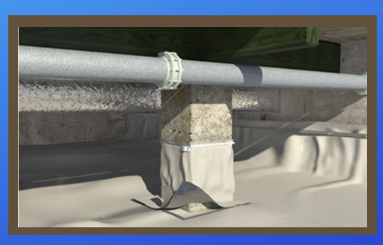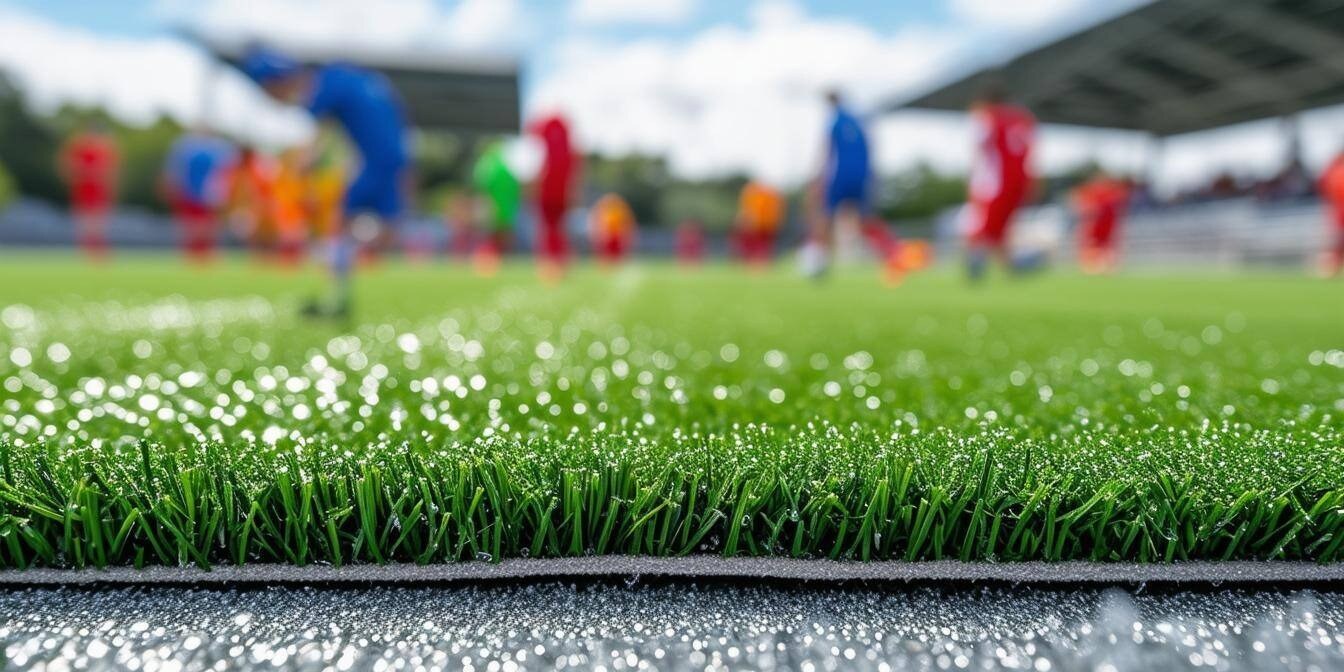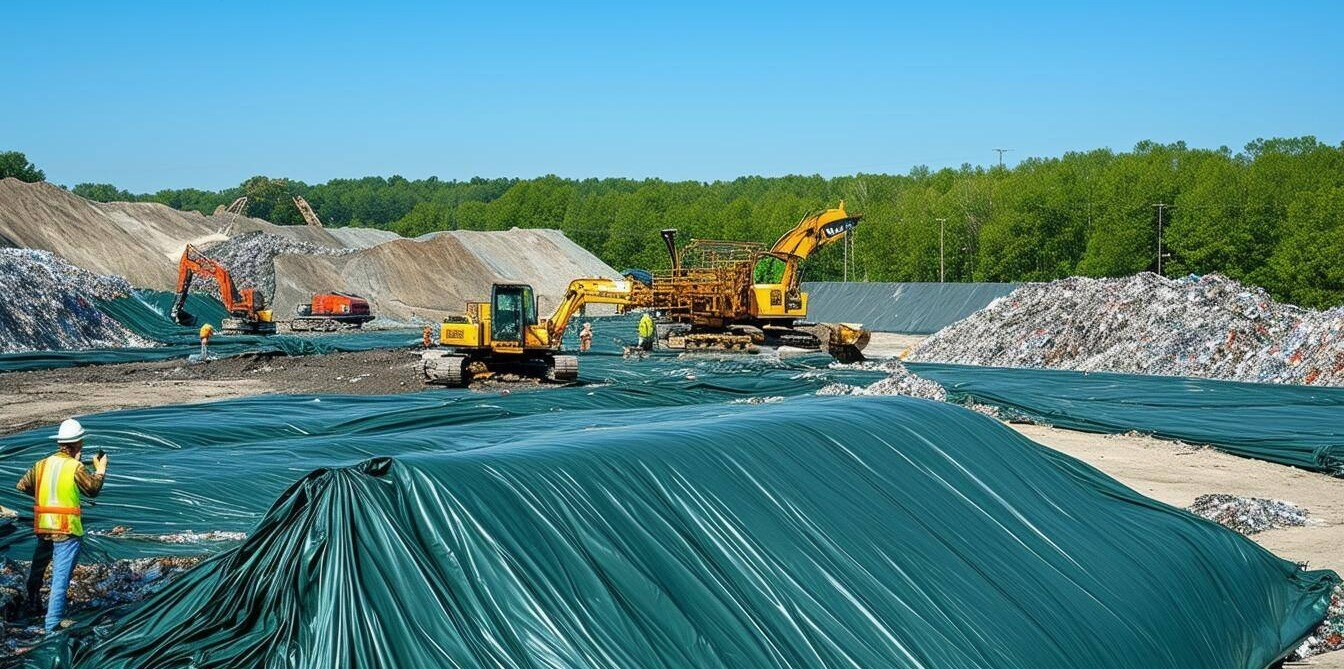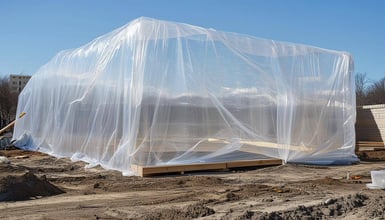1. What is HDPE and why is it used in construction?
Answer: High-Density Polyethylene (HDPE) is a strong, durable, and flexible plastic material commonly used in construction for geomembranes, liners, and pipes. It resists chemicals, moisture, and UV damage, making it ideal for applications like landfills, ponds, and containment systems.
2. What are the advantages of flexible plastic sheeting?
Answer: Flexible plastic sheeting offers versatility, ease of installation, and durability. It’s used in applications like vapor barriers, temporary enclosures, and weatherproofing. It conforms to uneven surfaces and is lightweight yet strong.
3. When should I use fire retardant plastic sheeting?
Answer: Fire retardant plastic sheeting is essential for projects where fire safety is critical, such as in construction sites, haunted houses, or public events. It’s treated to resist ignition and slow the spread of flames, meeting fire marshal requirements.
4. How does anti-static plastic sheeting work?
Answer: Anti-static plastic sheeting prevents static electricity buildup, which can pose a risk in environments with flammable gases, powders, or sensitive electronics. The material dissipates static charges, ensuring a safer work environment.
5. What are the standard thicknesses for HDPE liners?
Answer: HDPE liners typically range from 20 mil to 80 mil in thickness. The appropriate thickness depends on the application, with thicker liners used for high-stress containment and thinner liners for lighter-duty projects.
6. Can flexible plastic sheeting be reused?
Answer: Yes, flexible plastic sheeting can often be reused if it remains undamaged. For example, heavy-duty polyethylene sheeting is durable enough to withstand multiple uses in temporary enclosures or coverings.
7. What is self-adhesive plastic sheeting, and how is it applied?
Answer: Self-adhesive plastic sheeting features a sticky backing that adheres directly to surfaces without additional tape or fasteners. It’s commonly used for surface protection during construction or renovations. Simply unroll it onto the desired surface and smooth it down.
8. Is fire retardant plastic sheeting environmentally friendly?
Answer: Some fire retardant plastic sheeting options are made with environmentally friendly materials and are recyclable. Always check product specifications for eco-friendly certifications.
9. Can HDPE be used as a vapor barrier?
Answer: Yes, HDPE sheeting is an excellent vapor barrier due to its low permeability. It’s used in crawl spaces, basements, and under slabs to prevent moisture infiltration.
10. What makes anti-static plastic sheeting different from standard plastic?
Answer: Anti-static plastic sheeting is specially treated to prevent static charge accumulation. Unlike standard plastic, it’s designed to protect sensitive equipment and reduce fire hazards.
11. How do I choose the right thickness for fire retardant sheeting?
Answer: The thickness depends on the application. For temporary enclosures, thinner sheeting (6 mil) may suffice, while heavy-duty applications may require thicker material (10 mil or more).
12. What are common uses for HDPE in construction?
Answer: HDPE is used for geomembranes, water containment, pipes, vapor barriers, and soil stabilization. It’s valued for its durability, chemical resistance, and flexibility.
13. How do I install self-adhesive plastic sheeting without bubbles?
Answer: To avoid bubbles, unroll the sheeting slowly while pressing it down with a squeegee or a soft cloth. Smooth out wrinkles as you go for an even application.
14. Is fire retardant plastic sheeting required by law?
Answer: In many cases, local fire codes require fire retardant materials for certain applications, such as temporary structures, haunted houses, and public spaces. Always check with local fire marshal requirements.
15. How long does anti-static plastic sheeting remain effective?
Answer: Anti-static properties typically last as long as the material remains intact. However, excessive wear or prolonged exposure to harsh conditions may reduce effectiveness over time.
16. Can HDPE liners be welded on-site?
Answer: Yes, HDPE liners are often welded on-site using specialized equipment to create seamless, leak-proof installations.
17. What is the difference between reinforced and non-reinforced plastic sheeting?
Answer: Reinforced plastic sheeting includes a scrim or mesh layer for added strength and tear resistance, making it ideal for heavy-duty applications. Non-reinforced sheeting is lighter and more flexible.
18. Is fire retardant plastic sheeting waterproof?
Answer: Yes, most fire retardant plastic sheeting is waterproof, making it suitable for both fire protection and moisture control.
19. How do I dispose of used HDPE sheeting?
Answer: HDPE is recyclable. Check local recycling programs or facilities that accept plastic sheeting to ensure proper disposal.
20. What coatings are available for fire retardant plastic sheeting?
Answer: Fire retardant sheeting can include coatings such as poly, wax, or reinforced scrim for added durability and functionality.
21. Can anti-static plastic sheeting be used outdoors?
Answer: While anti-static plastic sheeting is designed for indoor use, some products are UV-treated for short-term outdoor applications. Verify with the manufacturer.
22. What are the benefits of using multi-layer HDPE liners?
Answer: Multi-layer HDPE liners provide added protection against punctures, UV damage, and chemical exposure. They are ideal for high-risk applications.
23. How do I verify fire retardant plastic sheeting meets safety standards?
Answer: Look for certifications such as NFPA 701, ASTM E-84, and MIL-PRF-3420H. These indicate the material meets recognized safety standards.
24. What industries benefit most from anti-static plastic sheeting?
Answer: Industries such as electronics, pharmaceuticals, and chemical manufacturing use anti-static plastic sheeting to protect sensitive equipment and materials.
25. How do I choose between HDPE and flexible plastic sheeting?
Answer: HDPE is best for applications requiring high durability and chemical resistance, like liners and geomembranes. Flexible plastic sheeting is ideal for temporary covers, vapor barriers, and surface protection.
Conclusion
Plastic plastic sheeting comes in many variations to better serve each project type. Reach out to us if you need some help deciding what plastic film will work best for you.















